How to Add Compost to Gardens in 2025 – 10 Tips and Tricks
-
Pete Ortiz
- Last updated:

It doesn’t matter how rich or fertile the soil is. After a while, its structure will worsen, resulting in poor drainage, bad air circulation, and slow plant growth. The good news is that it can be avoided if you add some compost to the mix. But how do you do that? What’s the right amount of compost for sandy and clay soil?
Do vegetables need more of it compared to flowers, or less? Will a container/pot benefit from adding compost? And finally, should you add compost to a lawn or use it as mulch? We’ve got a lot of ground to cover in this guide. So, put on your work gloves, grab a pitchfork, and let’s get to business!
 Composting: How Often Should You Do It?
Composting: How Often Should You Do It?
This depends on the soil, of course, as well as the climate in your area and the nature of the plants. The colder it is, the less often you will have to add compost to the soil. In a warmer climate, you should add compost twice a year; but if you’re living in a northern state, once a year should suffice. For new plants, composting is done in early spring, just before you plant anything.
To get the soil ready, 1–2 inches of compost should be more than enough. This only applies to bagged compost that you buy at a local store, though. If you’re using your own compost, it might be better to spread it in mid-fall. This way, it will reach perfect condition by spring. Also, be more generous with it: the compost layer should be at least 2–3 inches thick to ensure proper growth.
The 10 Tips to Add Compost to Gardens
1. Compost as Amendment for the Soil
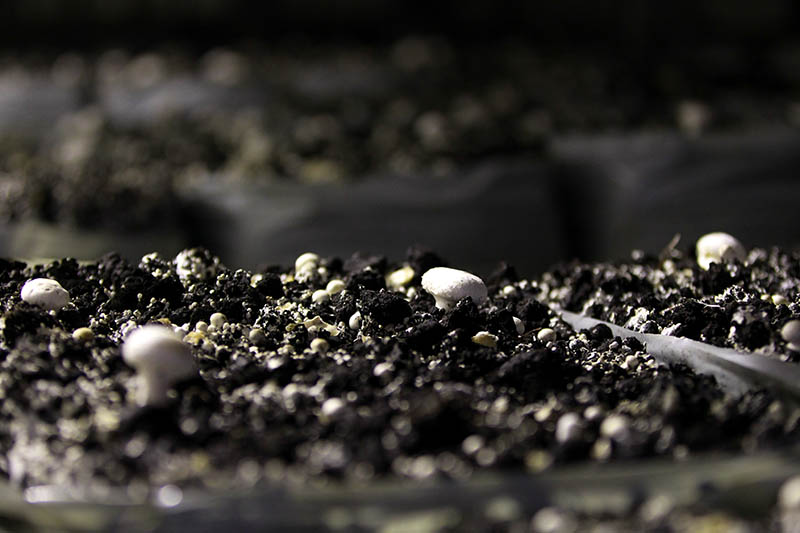
If you don’t know what kind of soil you’re dealing with, here’s a tried-and-true technique: start by laying up 3–5 inches of soil onto the ground. Next, top it off with a little bit of compost (1–2 inches). Do this in the spring or fall. These are the general recommendations, of course. So now, let’s focus on how much compost you’ll need for sandy and clay soil.
Sandy Soil: This type of soil is rather bad at moisture retention. It’s not that great at preserving the nutrients, either. Thankfully, both problems can be fixed with a little bit of compost. Don’t screen it, though: for sandy soil, we need the compost bits to differ in size and shape. For starters, go with a 4-inch layer. Use a fork to mix it with the soil. For the best results, the compost needs to go at least 8–10 inches into the ground.
Clay Soil: Clay soil is, in many ways, the opposite of sandy soil. It holds too much water in, which leads to rotten rots. On top of that, it’s much harder for roots to push through. Compost is an excellent remedy against this. But, before you spread it, grab a fork (a shovel/spade will also do) and loosen the topsoil (10–12 inches). Then, add 2–3 inches of compost and mix it in.
2. Feeding Veggies, Flowers, and Trees
Seeds, bulbs, plants, and shrubs are very fragile—you can’t use a hayfork or a pitchfork to spread the compost. Instead, you should manually add 2–4 inches around the crops and the plants. Make sure there’s a 1–1.5 feet gap between the compost and the stems of the plants. Otherwise, you might “burn” them. After that, you can rake the compost to spread it evenly.
- A thin layer of compost (0.5 inches) once or twice during the growing season will increase the harvest and strengthen the roots. With certain vegetables, you might have to add a new layer of compost once in 1–2 months to ensure steady growth. We’re talking about corn, squash, and tomatoes, to name a few.
- Remember, flowers don’t need tons of compost to flourish. On average, 1–1.5 inches of compost added once a year (in the fall) will do the trick. First, it will help the soil retain moisture. Second, the compost will protect the flowers from the cold. The important thing here is to mix the compost well with the soil so that the plants can feed on the nutrients. Adding it in the fall will serve as mulch.
- Maintaining beds. Make a habit of adding 1–2 inches of compost on top of your beds once in spring or fall, and watch the veggies and flowers thrive. Compost is a great tool for suppressing weeds and making the “good plants” more resistant to droughts. If the beds are new, go with 3–4 inches of compost instead.
- Planting a tree/shrub. When planting a new tree in the yard, gently add 0.5–1 inches of compost into the soil. But don’t add the compost (or mulch, for that matter) directly into the trunk. Don’t put it into the dug hole, either. Instead, spread it within the drip line to keep the soil warm and help it retain moisture.
3. What About Containers and Pots?
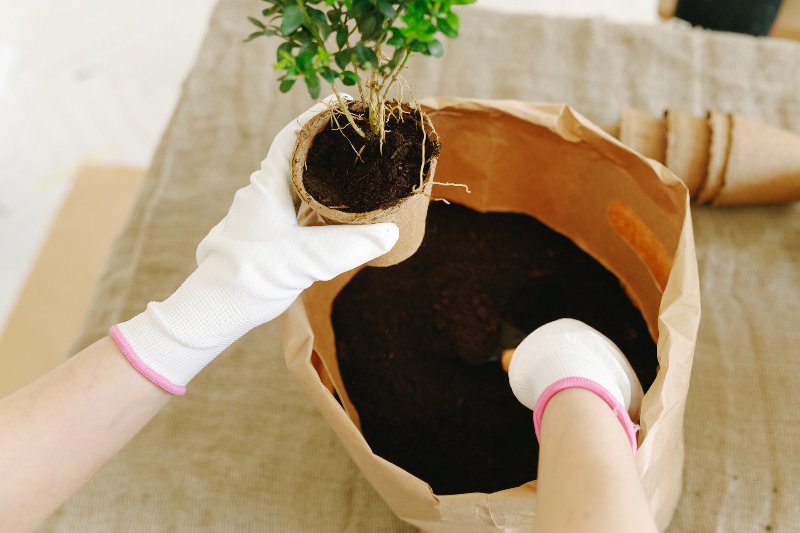
The best thing about pots is that they’re mostly weed-free. However, weeds do sometimes find their way in. That’s why it’s recommended to add some compost to the potting mix: to strengthen the soil, add some much-needed nutrients, and suppress the “unwanted guests”. Do this once in 6 months; 1–1.5 inches of compost will be enough. If you use compost from a heated pile (120°F), most of the weeds in there will already be dead.
4. Compost + Lawn: A Good Idea or Not?
Compost is a great amendment not only for gardens, beds, and pots but for lawns as well. All you have to do is sprinkle some compost over the grass, and the microorganisms do the rest. The one thing to keep in mind is that the less compost you add, the better. We are talking about 0.25 inches at most. Otherwise, it will stifle the growth, making the lawn wither.
Do this in the spring, during the growth season. And if you’re working with a new lawn, before you sow the seeds, add 1–2 inches of compost to the soil. Use a rake to mix it with the soil and then add another layer (05.–1.5 inches) once the seeds are in place. You can follow the same rules when installing the sod.
5. Use Compost as Mulch
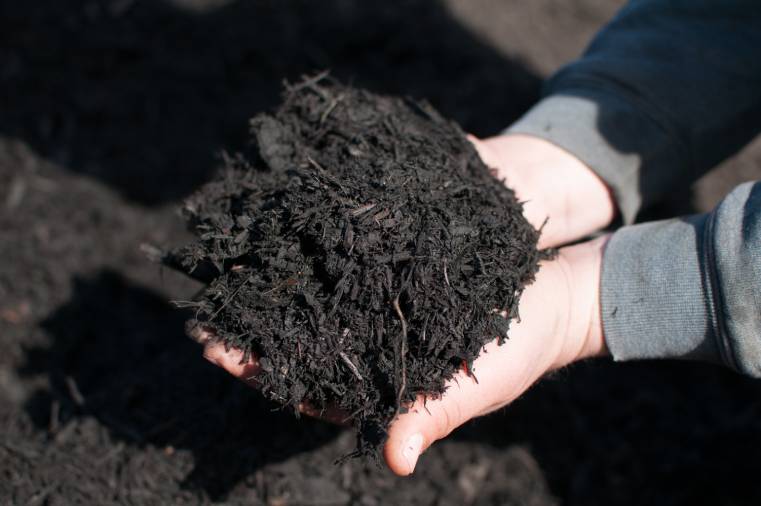
The main benefit of mulch is moisture retention. It also helps the soil stay warm. And if you use compost as mulch, it will provide newly-planted veggies and flowers with nutrients. On average, 2–4 inches of compost on top of the soil should get the job done. You have a choice: spread the mulch across the whole garden/bed or focus on individual plants.
Please keep in mind that compost will only be effective as a replacement for mulch if you don’t screen it. The reason is that the various sizes and shapes will aid in trapping the air. When all the organics in the compost are of the same size, their efficiency leaves a lot to be desired.
6. Why Not Make Some Compost Tea?
Looking for a way to make liquid compost? We have just the right recipe! Grab a pillowcase, nylon stocking, porous fabric, or a bag that can filter the compost. Fill a 5-gallon bucket with water and put the bag/fabric into it. Give it 24–36 hours to ferment and for the nutrients to seep into the bucket. Once the water is brown, that means the “tea” is ready. All that’s left is to use a spray bottle to feed your plants.
7. Storing Compost for Later: A Quick Guide
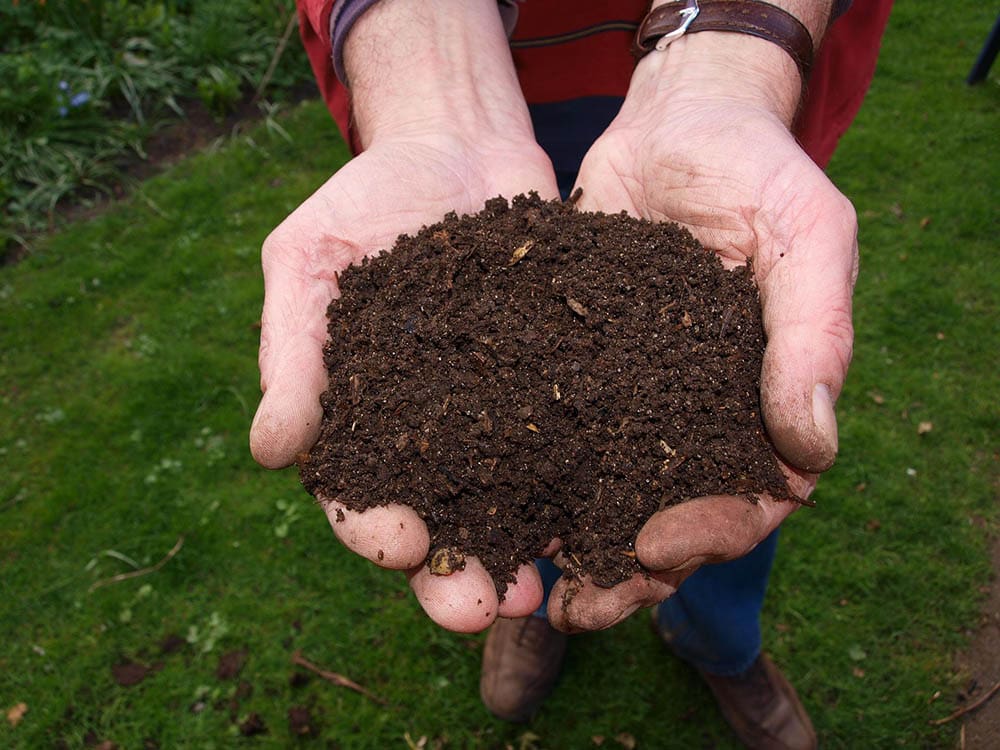
What if you have more compost than you need? The best way to store excess compost is to put it in containers with proper air circulation. Without oxygen, most microbes inside the pile will die. You can get a bunch of plastic containers or bags (woven bags are preferable) for cheap. They’ll have enough perforations to let air in.
To make the compost last longer, put it in a dry, dark, and cool area, like maybe in the attic or the basement (unless it’s prone to floods). Next year, when the growing season comes around, you can open the bags and use the compost to stimulate growth. If you’re planning on storing the pile outdoors, cover it with waterproof material.
8. Can Compost Be Mixed With Other Amendments?
Amendments are mostly used to change the pH of the soil. However, they don’t go well with compost as it negatively affects their performance. So, add the amendments first and give them some time to mix in with the soil. Ashes need very little time for that. They don’t last for very long, though. In contrast, lime acts slowly, yet it remains effective for many years.
9. Is the Compost Ready? Recognizing the Signs
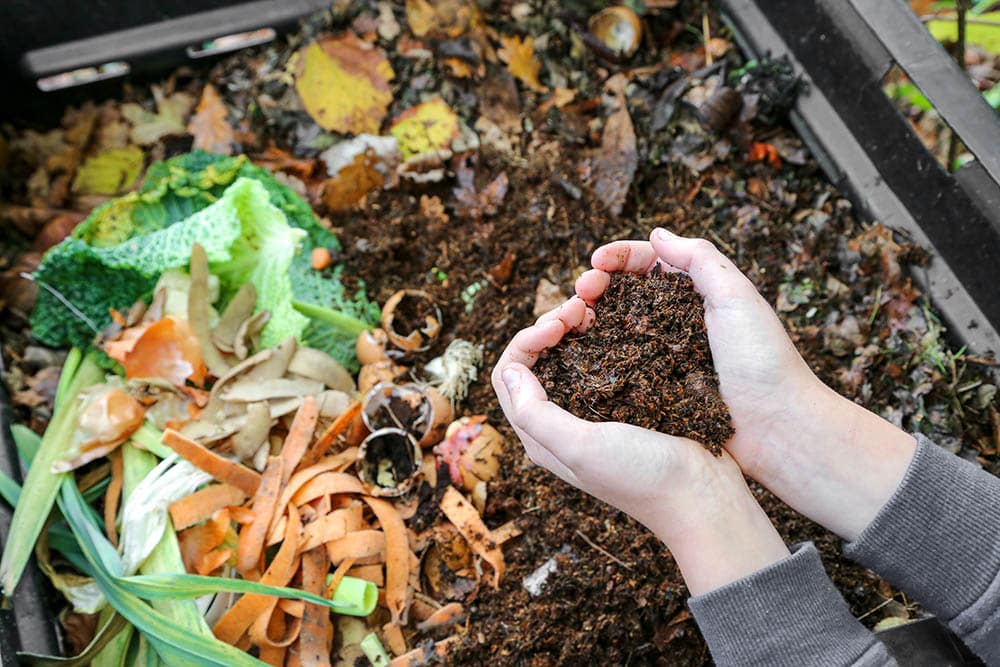
The bigger the pile, the longer it will take to decompose. The temperature, humidity levels, and chemical balance will also have an effect. Now, if you leave the pile somewhere outdoors to rot on its own, the process can take years. But if you put it in a bin and take proper care, the compost will be ready in 1–2 months. Watch out for the signs. When the compost is done, it gets smaller in size.
Also, when the organics are still breaking down, if you dig into the pile, it will be warm. It will get colder at the end of the cycle, however. Besides, ready-steady compost has an earthy smell and a dark brown color. Never use unfinished compost because the microorganisms living inside of it will steal the nutrients from the soil, hurting your plants.
10. Screen the Compost for the Best Results
The process of filtering out large chunks of compost that are left behind is called screening. Some gardeners recommend throwing these out, but why do that when you can put them to good use? For that, use a dedicated sifter or build one using hardware cloth. Once it’s ready, turn the screened compost into potting soil by mixing it with vermiculite or perlite (1-part to 3-parts).
 Compost vs Fertilizer: What Sets Them Apart?
Compost vs Fertilizer: What Sets Them Apart?
There’s only one difference here, but it’s a very significant one. Compost is used to amend the soil, while fertilizers stimulate plant growth. True, you add both ingredients into the soil. However, fertilizers don’t “feed” the soil in any way. They only have one purpose: to help fruits, vegetables, flowers, and herbs grow better and produce bigger crops. They do that by adding nutrients to the soil.
If the soil is having a hard time retaining moisture or achieving proper drainage, adding compost will fix that. The very structure of the soil will be improved as well, making it more fertile. Compost is rich in nutrients, too. Compost is a pile of decaying organics; a fertilizer can be both natural and synthetic. Summing up, both compost and fertilizer play key roles in a garden. But they can’t replace each other!
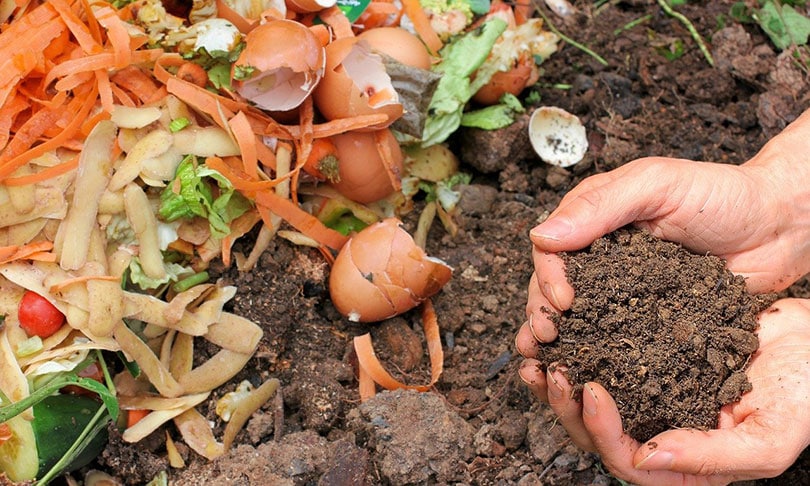
Compost vs Humus: Is It the Same Thing?
These organic matters do have a lot in common. However, they are very much different. We use the term compost to describe a pile of organics that are going through the process of breaking down. So, when you use that pile of organic matter at any stage of the decomposition, you’re dealing with compost. Humus is the final phase. If you leave a compost pile unattended for a very long time, you’ll get humus.
It’s not as rich in nutrients as compost, but it can still add nitrogen to the soil and keep pests at bay. Some experts use the word “humus” for decayed leaves and grass and say “compost” when talking about man-made food and yard waste. In both cases, it’s the microorganisms inside the pile that do the heavy lifting. They “chew through” the organic material, making it decompose.
 Conclusion
Conclusion
The practice of improving soil quality using compost has been around for thousands of years. It’s a relatively simple, yet effective technique of amending the soil and helping plants grow and prosper. You need to know exactly what you’re doing before adding it, though. Otherwise, you’ll end up causing more harm than good.
Different soil types, veggies, and flowers require different amounts of compost to thrive. Some need plenty of it; others grow best when there are only 0.5 inches of compost on top of the soil. It can be a bit hard to memorize it all. So, use our guide as your garden manual, put some elbow grease into it, and you’ll soon master the art of composting!
- GardeningChannel.Com – Compost vs. Fertilizer, Explained
- NewsWire.Edu – Compost enriches soil but doesn’t replace fertilizer
- UniversityOfFloridaExtension – When Is Compost Ready?
- TheGardener – How To Add Compost To Existing Plants
- GardenTabs.Com – When To Add Compost To Your Garden?
- OregonState. Edu – How to Use Compost in Gardens
- Ca.Gov – Benefits of Compost and Mulch Use
- GardeningMentor – Can Weeds Grow In Potted Plants?
- EarthEasy – The Best Compost Tea Recipe
- PlanetNatural – Adding Compost to Soil
- HelpMeCompost – How To Store Compost
- Gardeningchores.Com – Humus Vs. Compost
- Earthmatter.Org – How To Use Compost
Featured Image Credit: Gustavo Fring, Pexels
Contents

 Composting: How Often Should You Do It?
Composting: How Often Should You Do It? Compost vs Fertilizer: What Sets Them Apart?
Compost vs Fertilizer: What Sets Them Apart?